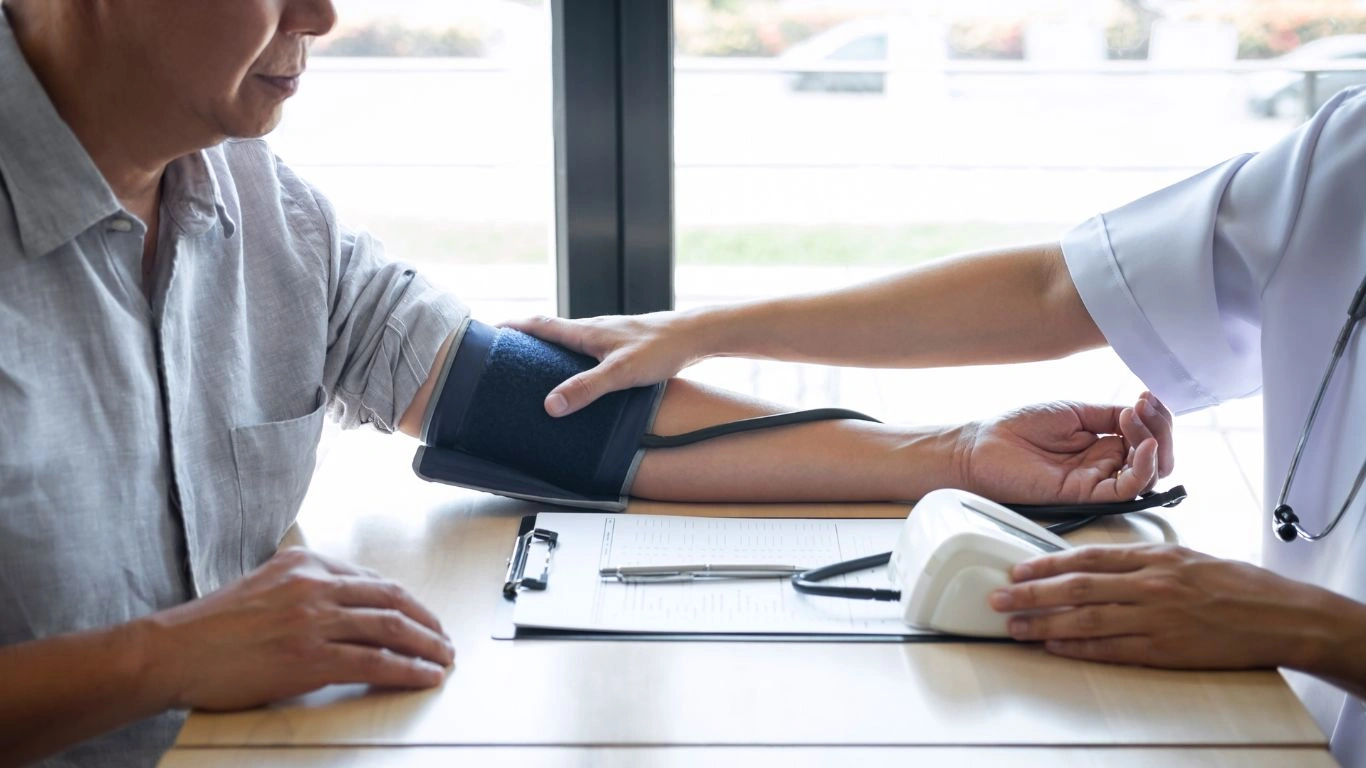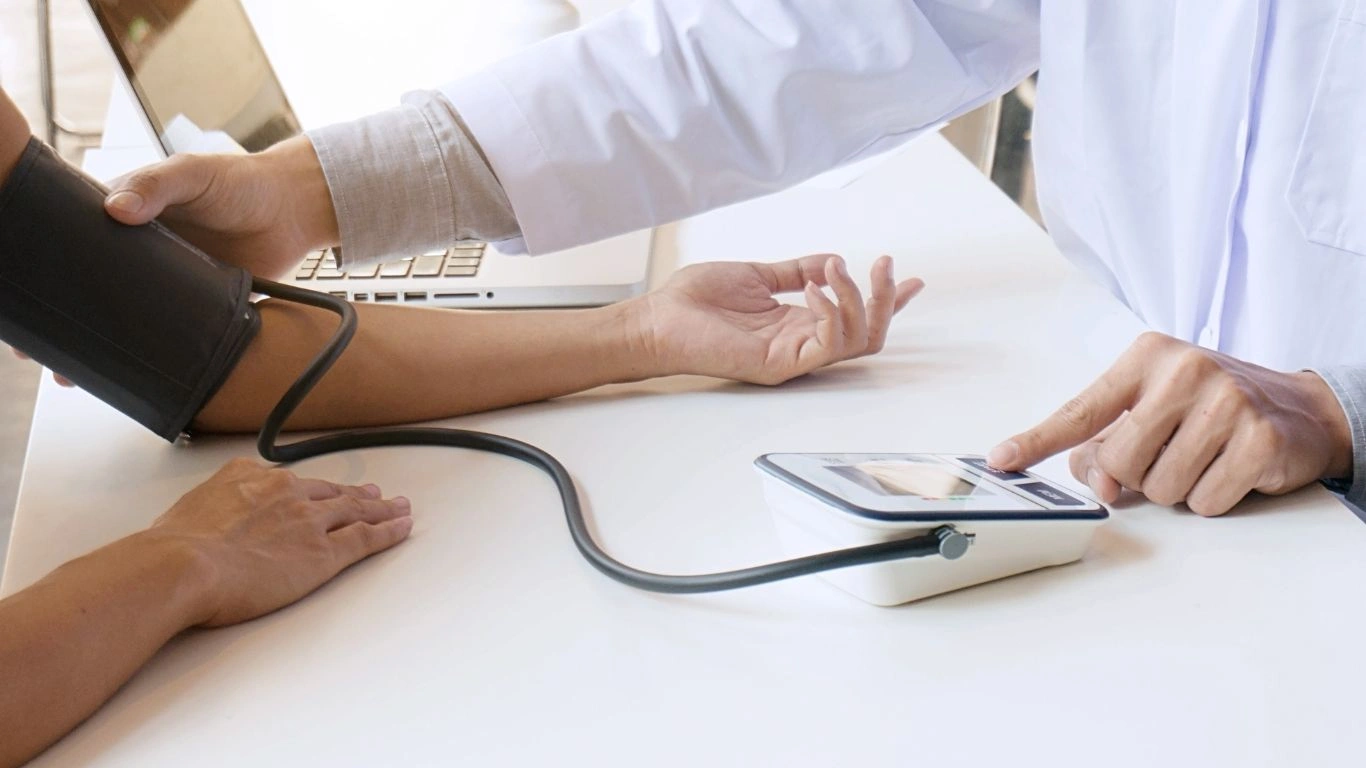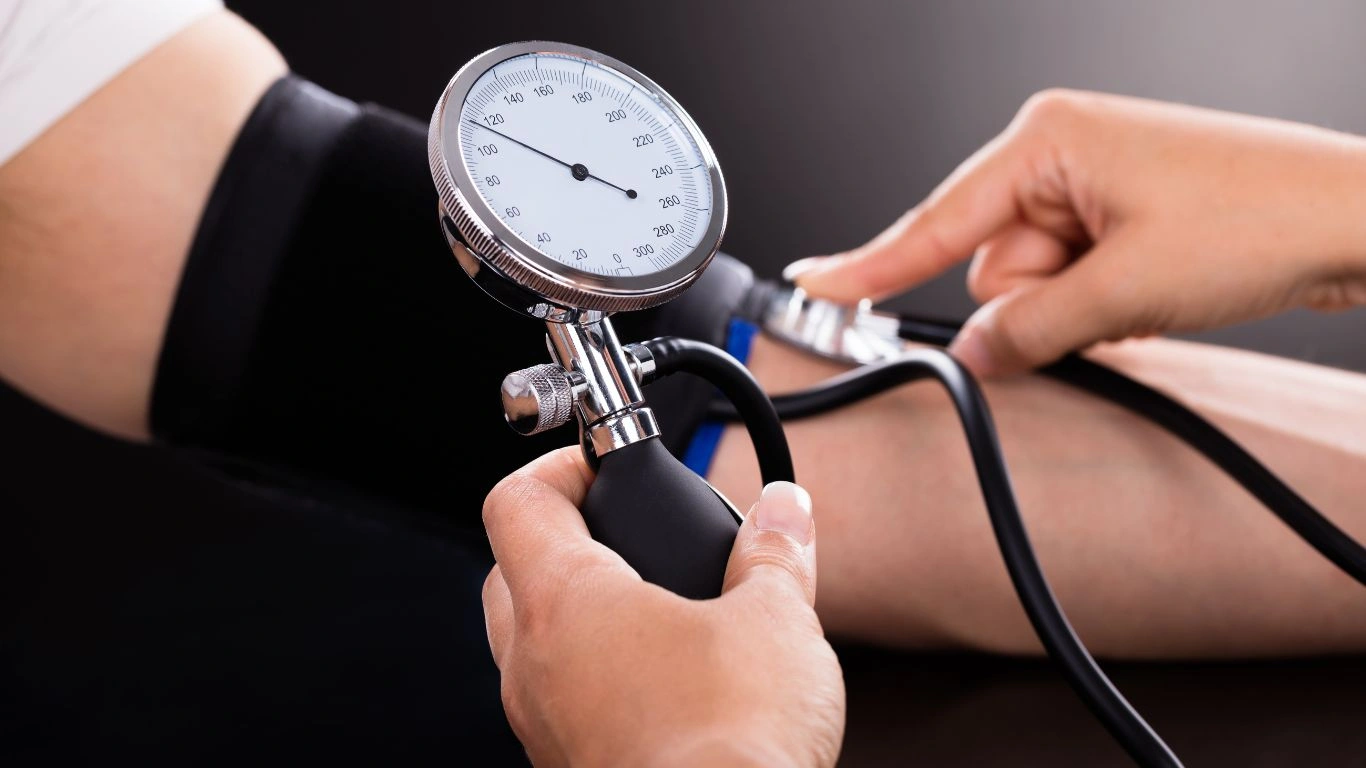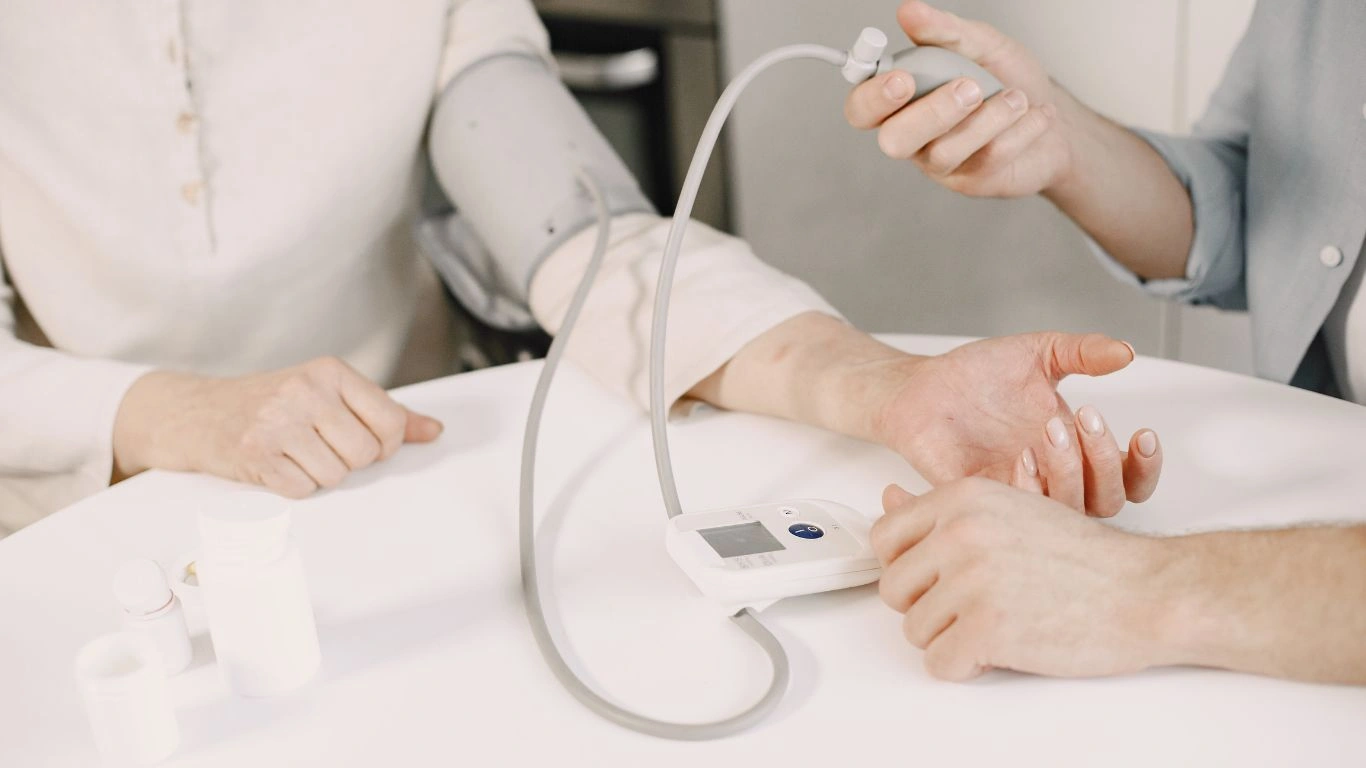How High Blood Pressure Impacts Poor Circulation: Key Insights for Better Health
High blood pressure, or hypertension, is something we hear about constantly, but have you ever wondered about its connection to poor circulation? It’s not always something that immediately comes to mind, but the truth is, these two health concerns are closely linked. High blood pressure can damage your blood vessels over time, making it harder for blood to flow freely through your body, which can lead to poor circulation. As someone who’s spent years specializing in hypertension, I’ve seen firsthand how these issues often go hand in hand, making it even more crucial to manage both effectively. In this post, we’ll break down the connection between high blood pressure and poor circulation, how one can impact the other, and why addressing both is key for your overall cardiovascular health.
The Link Between High Blood Pressure and Poor Circulation

When most people think of high blood pressure, they picture heart problems, and rightfully so. However, what’s often overlooked is how it can affect your blood vessels and, in turn, your circulation. Let’s dive into how this works.
To put it simply, high blood pressure means your heart has to work harder to pump blood through your arteries. Over time, this increased pressure can cause the walls of your arteries to become stiff and narrow. This narrowing, known as atherosclerosis, is one of the primary causes of poor circulation. It reduces the amount of blood that can flow through, and that can lead to a whole host of issues like cold hands and feet, dizziness, and even more severe conditions like stroke or heart attack.
How Does High Blood Pressure Cause Poor Circulation?
Here’s where things get a bit technical. High blood pressure causes your arteries to become less elastic, which is a problem because arteries need to be flexible to accommodate the changes in blood flow. Imagine a garden hose that’s too stiff—water can’t flow through it as easily, right? The same thing happens in your body when your arteries lose their flexibility. This restricts blood flow and can cause your tissues and organs to suffer from a lack of oxygen and nutrients.
As your blood vessels narrow, they may also form plaques, which can further hinder blood flow. This can lead to ischemia, or reduced blood supply to certain parts of the body. Poor circulation might start out feeling like just a nuisance, such as cold extremities or swelling in your legs, but it can progress into something more serious if not addressed.
How Poor Circulation Feels: Signs to Watch For

While poor circulation can develop gradually over time, the signs are usually pretty clear. If you’re dealing with high blood pressure, you’ll want to keep an eye out for the following symptoms:
- Cold hands and feet: When blood flow is restricted, your extremities can feel colder than usual, even in warmer temperatures.
- Swelling in the legs or ankles: Reduced blood flow can lead to fluid retention, causing noticeable swelling in your lower limbs.
- Dizziness or lightheadedness: If blood isn’t circulating properly to your brain, it can leave you feeling faint or dizzy, especially when standing up.
- Fatigue or weakness: Poor circulation can make it harder for your body to get the oxygen it needs, leaving you feeling drained and sluggish.
- Varicose veins: These twisted, bulging veins often appear in the legs and are a sign of poor circulation due to the pressure from stagnant blood flow.
If you’re noticing any of these symptoms, don’t just brush them off. They could be a sign that high blood pressure is affecting your circulation. While the connection between high blood pressure and poor circulation isn’t always obvious, these signs can be a wake-up call that something needs to change.
Why Addressing Both Conditions is Essential
When you’re managing high blood pressure, it’s not enough to just focus on lowering your numbers. You also need to think about how high blood pressure is affecting your circulation and take steps to improve it. Focusing on one without the other is like trying to fix a leak without addressing the root cause—things are only going to get worse over time.
As someone who’s worked with patients facing both of these issues, I can tell you that the best approach involves treating them together. Lowering your blood pressure through lifestyle changes, medication, or a combination of both is important. But don’t forget that improving circulation is just as crucial. It’s about taking a comprehensive approach to your cardiovascular health, which in turn helps prevent the long-term complications that come with both high blood pressure and poor circulation.
Simple Ways to Improve Circulation While Managing High Blood Pressure

Now that we know how high blood pressure and poor circulation are connected, let’s talk about some simple yet effective ways to improve circulation and manage your blood pressure at the same time. It doesn’t have to be complicated or require expensive treatments; small changes can make a big difference.
- Stay Active: Regular exercise is a great way to get your blood pumping and improve circulation. It doesn’t have to be intense—daily walking, swimming, or yoga can do wonders.
- Eat a Heart-Healthy Diet: Focus on foods that promote healthy blood pressure and circulation, like fruits, vegetables, whole grains, and lean proteins. The Mediterranean diet, rich in healthy fats from olive oil and nuts, is a popular choice.
- Stay Hydrated: Drinking plenty of water helps maintain blood volume and supports smooth circulation.
- Elevate Your Legs: If you experience swelling in your lower limbs, elevating your legs can help improve blood flow and reduce discomfort.
- Manage Stress: Chronic stress can increase blood pressure and affect circulation. Incorporating stress-reduction techniques, like meditation or deep breathing, into your daily routine can have a profound effect on both.
These are just a few of the lifestyle changes you can make to improve circulation while managing high blood pressure. The key is to start small and build from there. Consistency is the name of the game when it comes to taking control of your cardiovascular health.
Managing High Blood Pressure and Poor Circulation Together

In the previous section, we covered the connection between high blood pressure and poor circulation, but let’s take it a step further. What happens when you combine both of these conditions? Well, let me tell you—it’s not pretty, but it’s also not the end of the world. With the right approach, you can tackle both issues head-on and improve your quality of life. Over the years, I’ve helped countless patients do just that, and I’m confident that you can too. Let’s look at how managing both conditions together can make a huge difference in your overall cardiovascular health.
It’s important to recognize that high blood pressure and poor circulation often create a vicious cycle. High blood pressure damages the blood vessels, making it harder for the blood to circulate efficiently. As a result, poor circulation causes the heart to pump harder to move blood through the body, which can cause blood pressure to rise even more. This can lead to serious health problems like stroke, heart attack, and kidney disease if not managed properly. But here’s the good news: with a combination of lifestyle changes and medical intervention, you can stop the cycle and take control of your health.
The Importance of Regular Monitoring
If you have high blood pressure or poor circulation, one of the most important steps is regular monitoring. Keeping track of your blood pressure, heart rate, and symptoms of poor circulation can help you stay on top of your health and catch any potential issues before they escalate. As a hypertension expert, I can’t stress enough how vital this is.
It’s common for people to overlook these simple checks, but it’s essential. Many people with high blood pressure don’t even realize they have it because there are no obvious symptoms until it’s too late. The same goes for poor circulation—by the time symptoms like swelling or cold extremities show up, circulation could already be significantly compromised. By regularly measuring your blood pressure at home and consulting with your healthcare provider, you’ll be able to make adjustments to your treatment plan as needed.
Medications and Treatments for Both Conditions

When it comes to treating high blood pressure and poor circulation, there’s no one-size-fits-all solution. Each person is different, and the best approach depends on your specific health needs and lifestyle. However, there are a few common medications and treatments that can help manage both issues effectively.
For high blood pressure, there are several classes of medications that doctors commonly prescribe. These include:
- ACE inhibitors: These medications help relax blood vessels and lower blood pressure. They’re often prescribed for patients with both hypertension and heart problems.
- Beta-blockers: These drugs reduce the heart rate and the heart’s workload, making it easier to control blood pressure.
- Calcium channel blockers: These help lower blood pressure by relaxing and widening blood vessels, which also improves circulation.
- Diuretics: Often called “water pills,” these help remove excess fluid from the body, reducing pressure on the heart and blood vessels.
Now, when it comes to improving circulation, vasodilators can be prescribed to help relax the blood vessels and allow blood to flow more freely. These medications are particularly useful for people with peripheral artery disease (PAD), a condition where the blood vessels in the legs become narrowed or blocked, often due to high blood pressure.
For many people, a combination of these medications works best. For example, someone with high blood pressure and poor circulation might be prescribed an ACE inhibitor and a vasodilator to target both issues at once. Your healthcare provider will work with you to determine the best treatment plan based on your unique situation, and it’s important to have regular check-ups to monitor your progress.
Exercise: A Key Component in Improving Circulation

If there’s one thing I’ve learned over the years, it’s that exercise is a game-changer when it comes to both high blood pressure and poor circulation. The benefits are practically endless: it strengthens the heart, reduces stress, improves circulation, and even lowers blood pressure. It’s one of the most effective ways to manage both conditions without relying solely on medication. And the best part? You don’t need to run a marathon to reap the rewards. Small, consistent changes can make a big difference.
Let’s break it down a bit:
- Regular aerobic exercise like walking, cycling, or swimming can improve circulation by strengthening the heart and blood vessels.
- Resistance training can help build muscle mass, which supports better blood flow and improves overall vascular health.
- Stretching and flexibility exercises can help improve blood flow to areas that might be more prone to poor circulation, such as your legs or hands.
It’s all about consistency. Aim for at least 30 minutes of moderate exercise most days of the week. And don’t worry if you’re not an athlete—start slow and gradually increase your activity level as you feel more comfortable. Even a brisk walk around the block can make a huge difference in your circulation and blood pressure over time.
Non-Medical Treatments to Boost Circulation
Besides exercise, there are several other non-medical treatments that can help improve circulation and alleviate symptoms. These are some of the strategies I’ve recommended to my patients over the years:
- Massage therapy: A good massage can stimulate blood flow, reduce muscle tension, and help with the discomfort caused by poor circulation.
- Compression stockings: These can help prevent fluid buildup in the legs and promote better circulation, especially for people with swelling or varicose veins.
- Acupuncture: Some studies suggest that acupuncture may help improve blood flow and reduce symptoms of poor circulation, although more research is needed.
- Hot and cold therapy: Alternating between hot and cold compresses can stimulate circulation by encouraging blood flow to different areas of the body.
While these treatments can be helpful, they should be used in conjunction with other lifestyle changes, such as exercise and diet, for the best results. It’s important to remember that managing high blood pressure and poor circulation requires a holistic approach that includes both medical and non-medical strategies.
The Role of Diet in Managing High Blood Pressure and Poor Circulation

By now, you’re probably starting to see just how interconnected high blood pressure and poor circulation really are. But here’s another piece of the puzzle: your diet. What you eat (and what you don’t) plays a massive role in how your body handles both conditions. As a hypertension expert, I can confidently say that making small, intentional changes to your eating habits can have a huge impact on your cardiovascular health.
The foods you choose can either support your heart and blood vessels or contribute to further damage. For example, a diet high in sodium and processed foods can worsen both hypertension and circulation problems. On the other hand, incorporating foods that are rich in antioxidants, healthy fats, and fiber can help lower blood pressure and improve circulation. Let’s dive into some key dietary changes you can make to take control of your health.
The DASH Diet: A Proven Strategy for Lowering Blood Pressure
One of the most widely recommended diets for managing high blood pressure is the DASH diet (Dietary Approaches to Stop Hypertension). This eating plan focuses on consuming a variety of nutrient-rich foods, such as fruits, vegetables, whole grains, lean proteins, and low-fat dairy, while limiting sodium, red meat, and sweets.
In my experience, I’ve seen patients who adopt the DASH diet experience significant improvements in both their blood pressure and circulation. The key is that this diet emphasizes foods that support healthy blood vessels and help reduce inflammation—both of which are essential for proper circulation.
Some of the foods included in the DASH diet are:
- Fruits and vegetables: These are packed with vitamins, minerals, and fiber, which help lower blood pressure and promote healthy circulation.
- Whole grains: Brown rice, quinoa, and whole-wheat bread are excellent sources of fiber that help regulate blood sugar and support heart health.
- Lean proteins: Skinless poultry, fish, and legumes are lower in saturated fat, making them heart-healthy choices.
- Low-fat dairy: Dairy products like yogurt and milk can help improve circulation by providing calcium and potassium, which help regulate blood pressure.
The DASH diet is a balanced approach to nutrition that can benefit nearly everyone, not just those with high blood pressure. If you’re already managing hypertension or poor circulation, it’s a great way to start taking control of your health through food.
Supplements for Supporting Blood Pressure and Circulation

While a healthy diet and regular exercise are the cornerstone of managing high blood pressure and poor circulation, some supplements may also offer additional benefits. Again, it’s always a good idea to consult with your healthcare provider before adding any new supplements to your routine, but here are a few that I’ve seen work well for many patients:
- Omega-3 fatty acids: Found in fish oil and certain plant-based sources like flaxseeds, omega-3s are known to help lower blood pressure and improve circulation by reducing inflammation and promoting healthy blood vessels.
- CoQ10: This antioxidant plays a key role in energy production and has been shown to support blood pressure levels by improving the health of blood vessels.
- Magnesium: Magnesium helps relax blood vessels, which can reduce blood pressure and improve circulation, particularly in people who are magnesium-deficient.
- Garlic: Garlic has been shown to have both blood-pressure-lowering and circulation-boosting effects, thanks to its ability to relax blood vessels and improve blood flow.
Supplements can offer some extra support, but they should not replace lifestyle changes like diet and exercise. Think of them as an additional tool in your toolbox for managing high blood pressure and poor circulation. Always make sure you’re working with a healthcare provider to determine what might work best for you.
Staying Consistent: Your Long-Term Approach
When it comes to managing high blood pressure and poor circulation, consistency is everything. A lot of people think that once their blood pressure is under control or their circulation improves, they can stop taking care of themselves. But that’s a slippery slope. To see lasting results, you need to adopt a long-term, sustainable approach that includes maintaining a healthy lifestyle, monitoring your blood pressure regularly, and staying consistent with any prescribed treatments.
In my practice, I’ve worked with people who’ve seen incredible improvements by simply sticking to their treatment plans and making small, steady changes over time. It’s about creating healthy habits that you can maintain for the long haul, rather than trying to make drastic changes all at once. Rome wasn’t built in a day, and neither is a healthy cardiovascular system.
If you’ve been struggling with high blood pressure and poor circulation, don’t get discouraged. You don’t have to be perfect every day. Focus on progress, not perfection, and remember that small steps—like cutting back on sodium, going for a walk, or drinking more water—can add up to big changes over time. Your health is in your hands, and every positive change you make is a step in the right direction.
References
For more information on high blood pressure, poor circulation, and heart health, check out the following resources:
- Health Usias – Your trusted source for hypertension and circulation management tips.
- CDC: High Blood Pressure
- American Heart Association: High Blood Pressure
Always consult with your healthcare provider before making any significant changes to your health routine. The advice in this article is for informational purposes only and should not replace professional medical advice.
Disclaimer: The information provided in this article is intended for general educational purposes and is based on current medical knowledge. It is not intended to diagnose or treat any specific medical conditions. Always consult a healthcare provider for personalized medical advice.

Dr. Gwenna Aazee is a board-certified Internal Medicine Physician with a special focus on hypertension management, chronic disease prevention, and patient education. With years of experience in both clinical practice and medical writing, she’s passionate about turning evidence-based medicine into accessible, actionable advice. Through her work at Healthusias.com, Dr. Aazee empowers readers to take charge of their health with confidence and clarity. Off the clock, she enjoys deep dives into nutrition research, long walks with her rescue pup, and simplifying medical jargon one article at a time.






